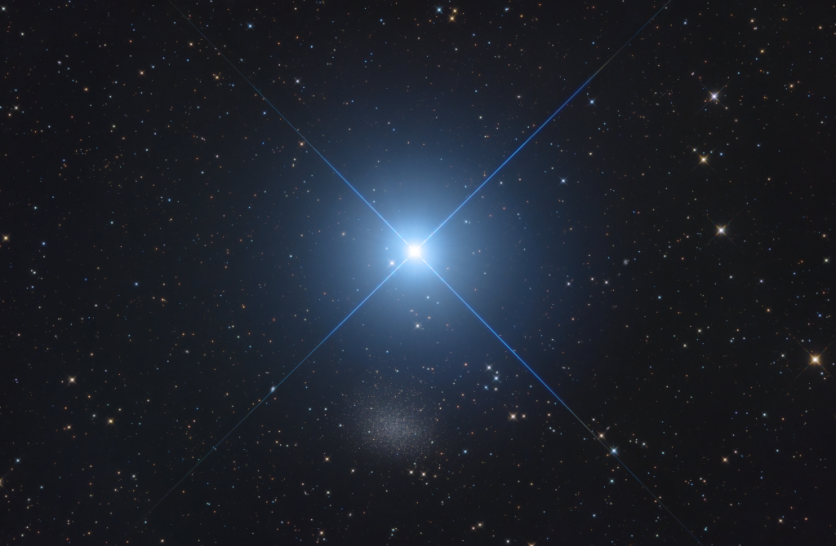NASA's daily image release showcases a roaring sight featuring the star Regulus, the Lion's heart.
The captivating image, credited to Markus Horn, captures Regulus—a hot, rapidly spinning star—above the eastern horizon in the northern hemisphere's spring sky.

Regulus and a Dwarf
This alpha star of Leo stands out prominently in the telescope's field of view, residing at a distance of 79 light-years. Regulus is known to be part of a multiple star system, characterized by its hot and swiftly rotating nature, according to NASA.
Accompanying Regulus in the captured image is a diffuse patch of starlight located just beneath it. This light emanates from Leo I, a dwarf spheroidal galaxy within the Local Group—a cluster dominated by our Milky Way Galaxy and the Andromeda Galaxy (M31).
Leo I holds a unique distinction as one of the most remote known small satellite galaxies revolving around the Milky Way, situated approximately 800 thousand light-years away.
NASA also noted that studies of Leo I have uncovered evidence of a supermassive black hole at its core, akin in mass to the one residing at the center of our own Milky Way.
Read Also : NASA's Picture of the Day: Jupiter Looking Sharp in These Breathtaking New Rooftop Telescope Images
Regulus: The Heart of the Lion
According to EarthSky, Regulus is the brightest star in the Leo constellation. As March and April progress, Regulus climbs higher in the sky, replacing winter constellations like Orion now receding in the west. This blue-white luminary shines brightly in the eastern evening heavens upon sunset in May.
Identifying Regulus amidst the stars is made easier by its location at the base of a star pattern resembling a reversed question mark, constituting the head and forequarters of Leo the Lion. Additionally, Regulus contributes to the Spring Triangle, an asterism formed by three prominent stars.
Despite appearing singular to the naked eye, Regulus is, in fact, a system of four stars, ranking 21st among the brightest stars visible from Earth. Notably, its position almost directly on the ecliptic—the path traced by the sun, moon, and planets across the sky—presents opportunities for planets to pass near or even occult (cross in front of) Regulus.
Venus notably performed this rare alignment on July 7, 1959, with a repeat occurrence expected on October 1, 2044, according to EarthSky.
Regulus remains a consistent fixture in the night sky, visible throughout the year except for a brief period around August 22.
Observers can anticipate notable events, such as the passage of bright planets like Venus and Mars near Regulus, which adds to the star's allure.
Additionally, the moon regularly graces Regulus with its proximity, occasionally occulting the star as seen from Earth - a spectacle set to unfold in a series of 20 lunar events from July 2025 to December 2026, with Mars and Jupiter poised to join the cosmic display in December 2026.
Related Article : NASA's Hubble Space Telescope Captures 'Butterfly Nebula' In Stunning Motion | Fun Facts About This Beautiful Space Butterfly

ⓒ 2025 TECHTIMES.com All rights reserved. Do not reproduce without permission.




